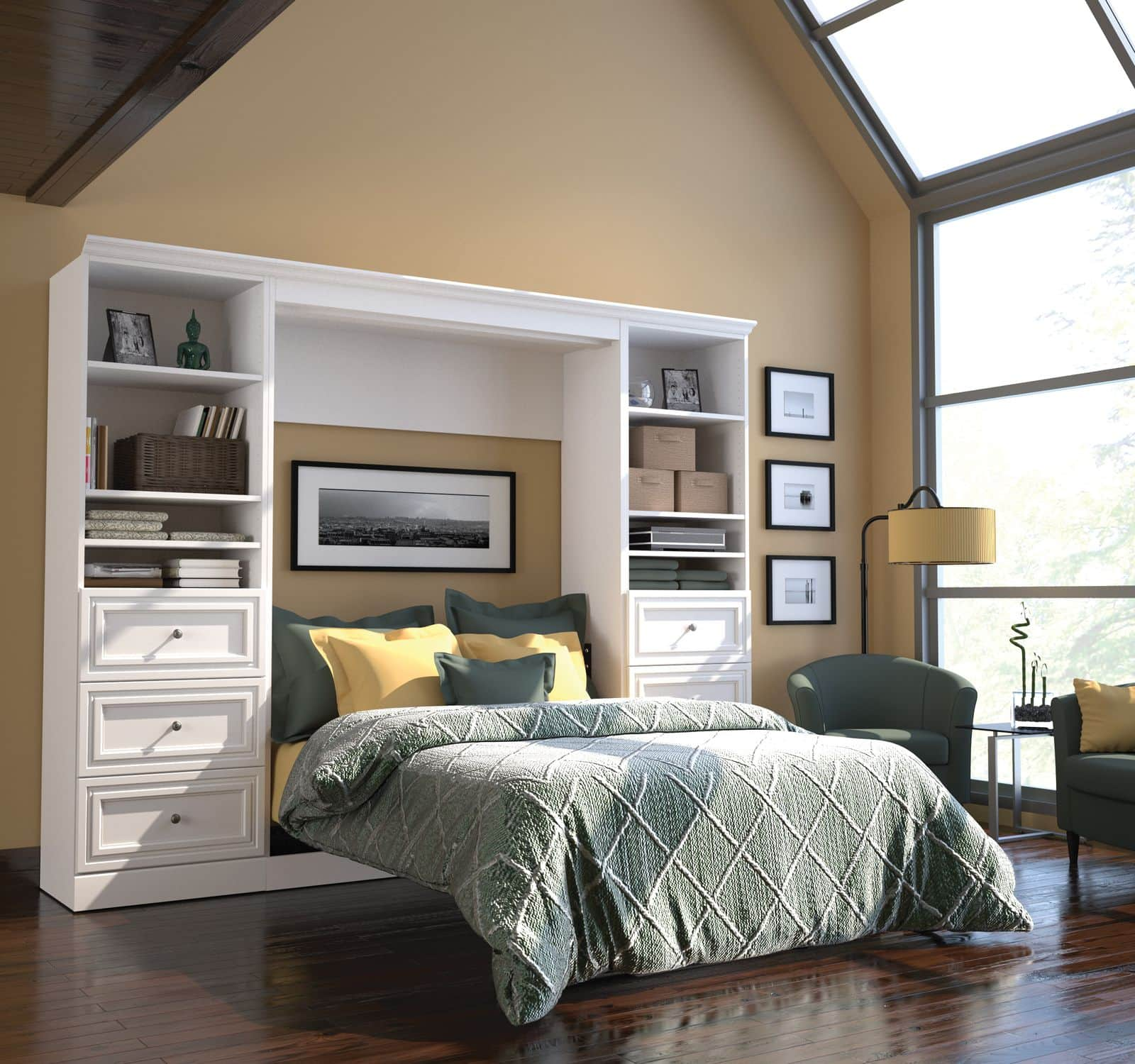
Introduction
When it comes to maximizing space in small living areas, Murphy beds have become a popular solution. Also known as wall beds, they can be folded up and stored vertically against a wall, creating more usable floor space during the day. Murphy beds are available in a variety of materials and designs, each with its own unique advantages and considerations. In this article, we will explore the different materials and designs available for Murphy beds, helping you make an informed decision when choosing the perfect one for your space.
Materials

1. Wood
Wood is the most common material used in the construction of Murphy beds. It offers durability, strength, and a classic aesthetic that can complement any room decor. Some popular wood options include oak, pine, maple, and cherry. Each type of wood has its own characteristics and finishes, so you can choose the one that best suits your preferences.
- Oak: Known for its strength and durability, oak is a popular choice for Murphy beds. It has a beautiful grain pattern and can be stained in various shades to match your room's style.
- Pine: Pine is a lightweight wood that is often used for budget-friendly Murphy bed options. It is versatile and can be easily painted or stained to achieve the desired look.
- Maple: Maple is a hardwood that offers a smooth and consistent finish. It is resistant to scratches and dents, making it a practical choice for Murphy beds.
- Cherry: Cherry wood has a rich and warm color that deepens over time. It is a luxurious option for Murphy beds and can add an elegant touch to any space.
2. Melamine
Melamine is a synthetic material made by combining melamine resin and paper to create a durable and versatile surface. It is often used as a budget-friendly alternative to wood. Melamine Murphy beds are available in various colors and finishes, making them easy to match with your existing furniture and decor. They are also resistant to scratches and moisture, making them a practical choice for households with children or pets.
3. Metal
Metal Murphy beds offer a sleek and modern look. They are constructed using lightweight yet sturdy metal frames, which are often powder-coated for added durability. Metal beds are known for their space-saving design and ease of use. They are typically available in a range of colors and finishes, allowing you to find the perfect match for your room's aesthetic.

Designs
1. Vertical Murphy Beds
Vertical Murphy beds are the most common design and are ideal for rooms with high ceilings. They are designed to be stored vertically, with the head of the bed against the wall when not in use. Vertical Murphy beds are easy to operate and require minimal effort to fold up and down. They are available in various sizes, from twin to king, making them suitable for different room sizes.
2. Horizontal Murphy Beds
Horizontal Murphy beds are a great option for rooms with limited vertical space. They are designed to be stored horizontally, with the head of the bed against the wall. Horizontal Murphy beds are wider than vertical ones, making them ideal for accommodating guests or couples. However, they may require more effort to fold up and down compared to vertical beds.
3. Murphy Bunk Beds
Murphy bunk beds are a practical solution for maximizing space in children's rooms or guest rooms. They feature two or more beds stacked vertically, with one bed folding up against the wall when not in use. Murphy bunk beds are available in various configurations, such as twin over twin, twin over full, or even triple bunk beds. They are designed with safety features to ensure stability when the beds are in use.
Factors to Consider
When choosing between different Murphy bed materials and designs, there are several factors to consider:
- Space: Evaluate the available space in your room and choose a Murphy bed design that best fits the dimensions. Consider both the open and closed dimensions to ensure the bed doesn't obstruct other furniture or walkways.
- Usage: Determine the primary use of the Murphy bed. If it will be used frequently, opt for a design that is easy to fold up and down. If it will be used by children, prioritize safety features.
- Style: Consider the overall style and aesthetic of your room. Choose a material and design that complements your existing furniture and decor.
- Budget: Set a budget for your Murphy bed purchase. Keep in mind that different materials and designs come at varying price points.
- Installation: Evaluate the installation requirements of the Murphy bed. Some designs may require professional installation, while others can be easily assembled by following the provided instructions.
Summary
Choosing the right Murphy bed material and design can greatly enhance the functionality and aesthetics of your living space. Wood offers durability and a classic look, while melamine provides a budget-friendly option with various color choices. Metal beds offer a sleek and modern appearance. When it comes to designs, vertical Murphy beds are ideal for rooms with high ceilings, horizontal beds are suitable for limited vertical space, and Murphy bunk beds maximize space in children's rooms or guest rooms.
Consider factors such as available space, usage, style, budget, and installation requirements when making your decision. By carefully considering these factors and understanding the different materials and designs available, you can choose a Murphy bed that perfectly suits your needs and preferences.